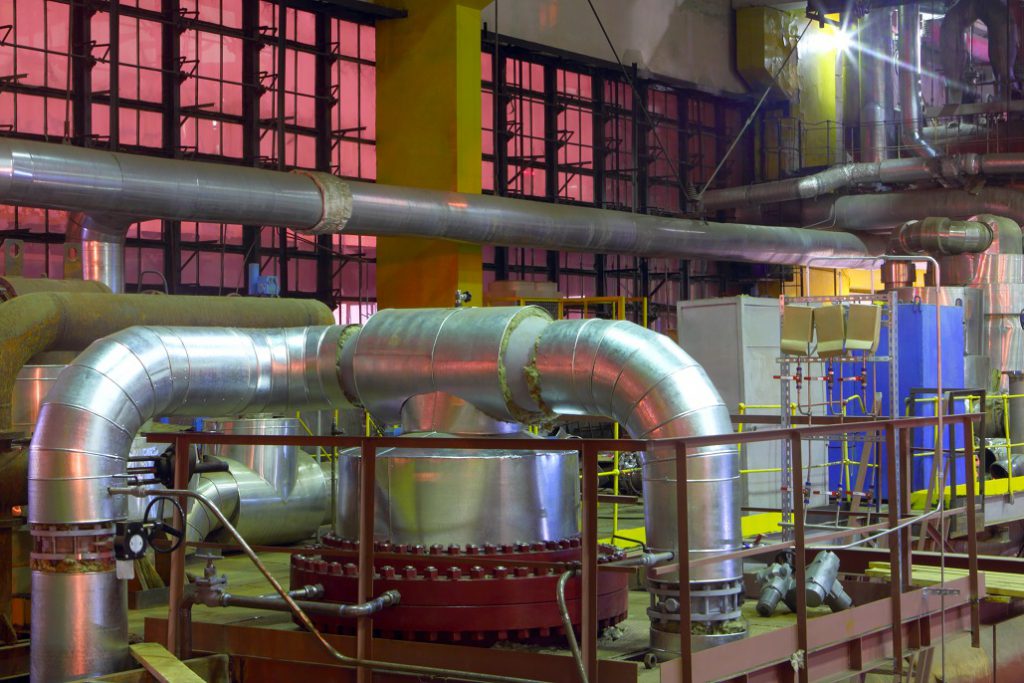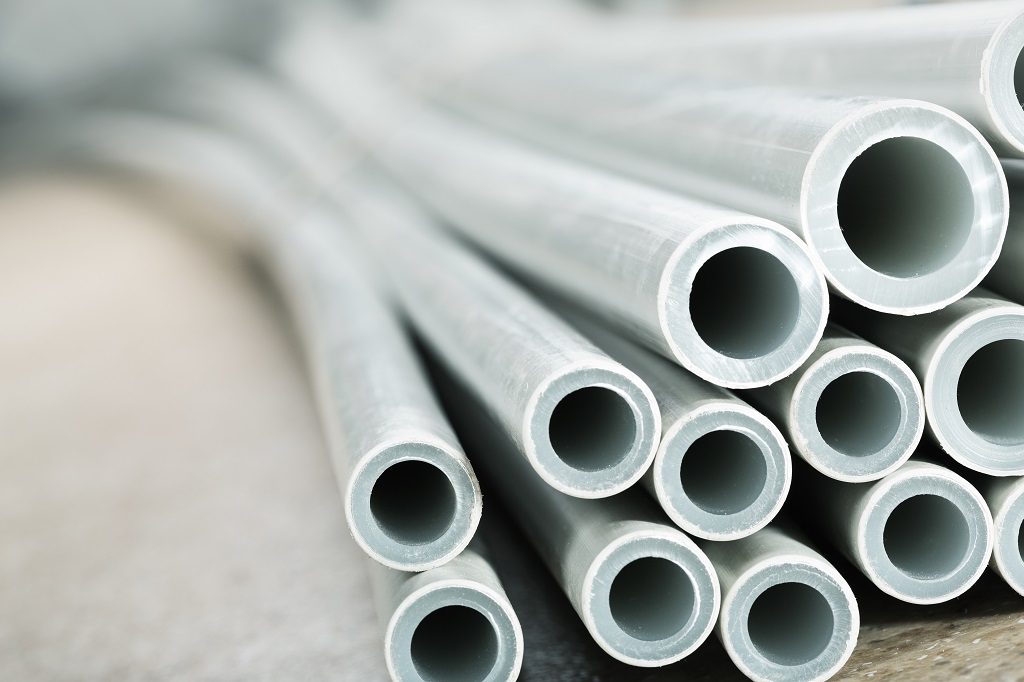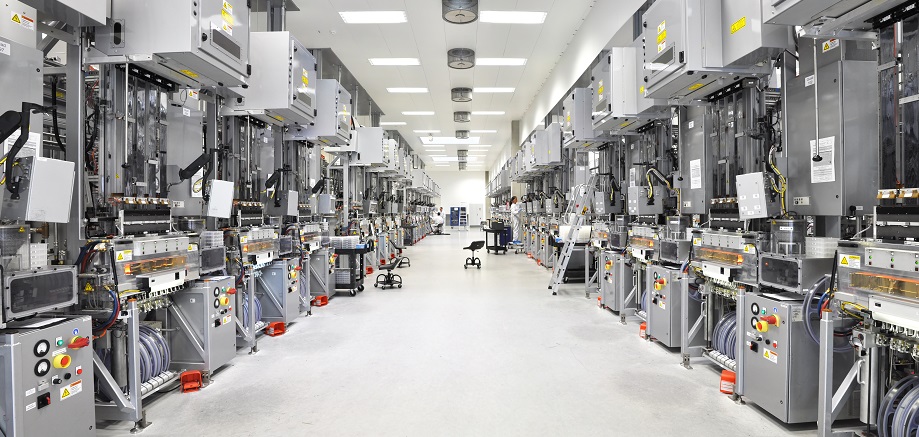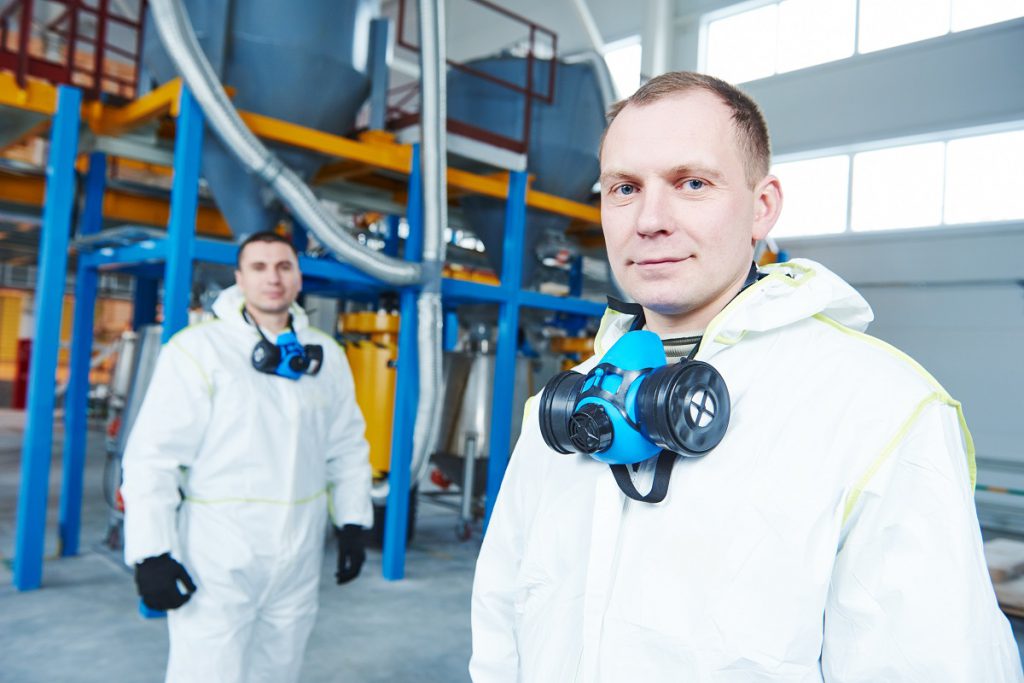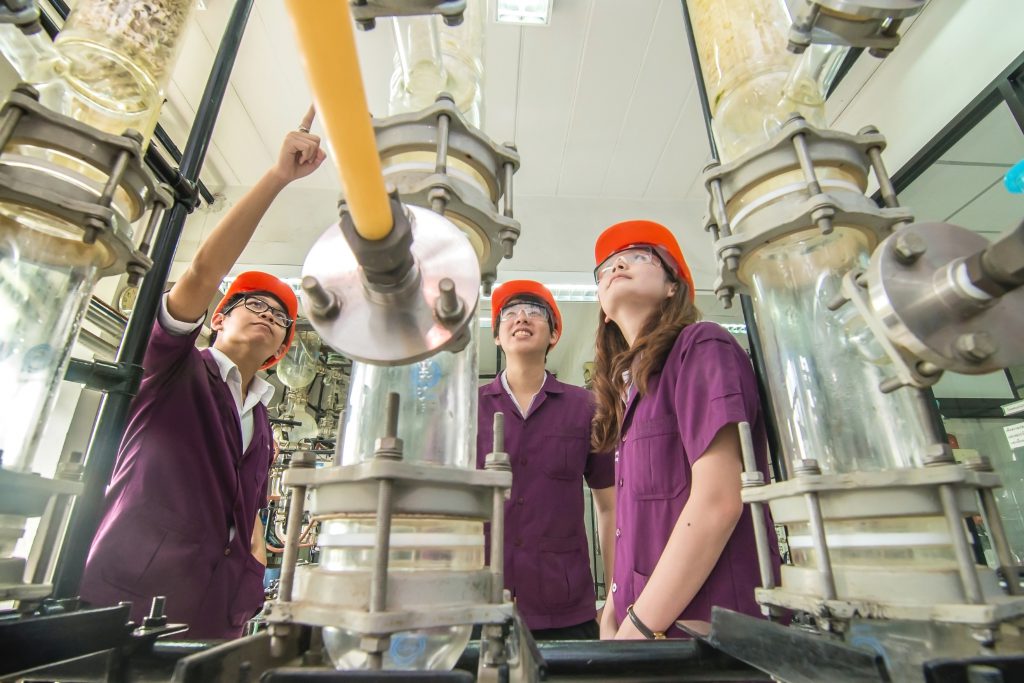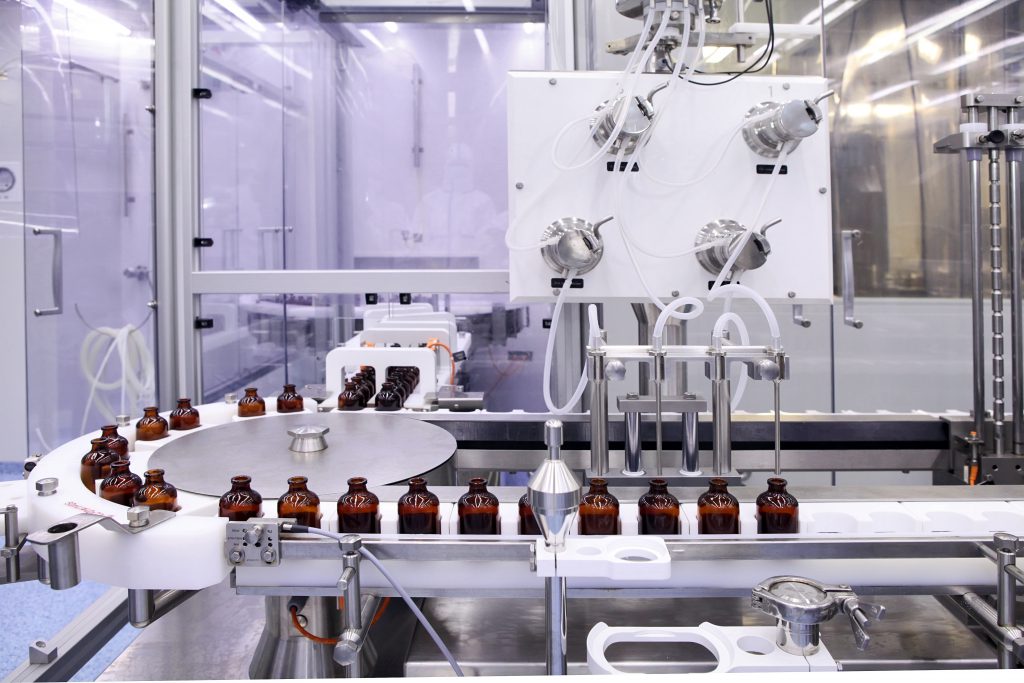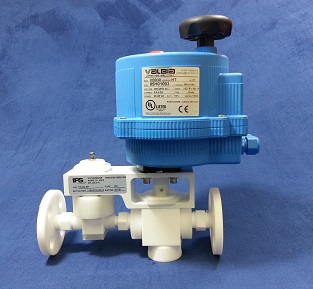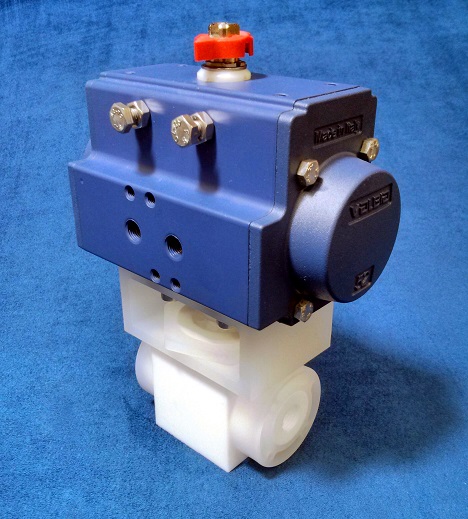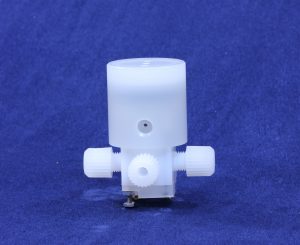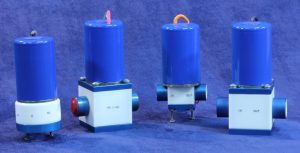Various industrial applications require the use of tools that can withstand challenging conditions. Our nitrogen spray gun is designed and manufactured to do just that. With a PTFE construction, it has the capability to operate successfully under the influence of various deteriorating and corrosive elements and agents, including moisture. At iPolymer, we supply nitrogen and other types of spray guns to customers on an international basis. Continue reading Post ID 231
-
-
DI Water Spray Gun | Features and Benefits
At iPolymer, we manufacture a comprehensive array of products for deionized (DI) water systems and purified water processing systems, including our DI water spray gun. The key to these systems is utilizing a category of high purity polymer materials that do not facilitate additional ion particles within the water flow path. The purpose of using these polymers is to help ensure exceptional chemical inertness and also prevent the development of viruses and bacteria within the media. Continue reading Post ID 231
-
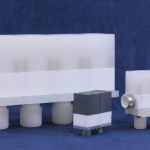 High Purity Valves and Other Pneumatic Valves from iPolymer
High Purity Valves and Other Pneumatic Valves from iPolymer
At iPolymer, we offer a Pneumatic Valve Family that includes an extensive array of pneumatically actuated fluid handling high purity valves that are designed, manufactured, and distributed from our facility in Irvine, CA. Continue reading Post ID 231
-
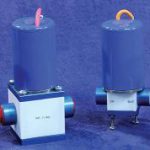 The PTFE Solenoid Valve – Features and Applications
The PTFE Solenoid Valve – Features and Applications
A device used to manage valve activation is referred to as a solenoid. These devices are electromechanical in nature and control the flow of gas or liquid. The operation of a PTFE Solenoid Valve includes an electrical current running through the coil which actuates the coil armature and opens the valve internal plunger. The coil is as traditional direct acting electro-mechanic device. Electrical current flowing through the coil windings creates a magnetic field. This magnetic field actuates the coil armature, which in turn actuates the valve plunger. De-energizing the coil allows an internal spring to return the valve to its natural state.
Continue reading Post ID 231
-
 Considerations When Selecting iPolymer Chemical Resistant Solenoid Valves
Considerations When Selecting iPolymer Chemical Resistant Solenoid Valves
TEST UPDATE
At iPolymer, we specialize in high purity valves and products for a wide-range of industries, from chemical processing facilities, to clean room applications. While we do provide standard types of valves, including various materials of construction, flow configurations and seat sealing methods, we also work directly with companies to create custom valves for unique applications.Our line of chemical resistant solenoid valves is a great example of our options in products. We provide a range of different variables which can be selected in the valve types, with 6,000 possible configurations available. All of these valves are designed with PTFE as the surfaced for all wetted areas of the valve.
Continue reading Post ID 231
-
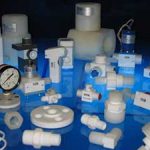 Comparing Providers Of High Purity Valves
Comparing Providers Of High Purity Valves
In many processing and manufacturing applications, choosing high purity valves and system components is a requirement for the job. At iPolymer, we have become experts at providing high purity actuators, fittings, valves, and spray guns to companies in the pharmaceutical, medical, high-purity laboratory, and general types of sanitary and chemical processing sectors.
With our expertise and our ability to work with our customers to create the custom sizes and options in all of our products they need, we have a built a solid reputation as a top partner for all types of high-purity engineered polymer fluid handling systems. With our experience in the field, we have the engineers, and the manufacturing processes, to create the ideal high purity valves for even the most challenging of applications.
Continue reading Post ID 231
-
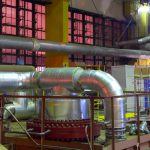 How to Use a PTFE Stopcock in Aggressive Liquid Applications
How to Use a PTFE Stopcock in Aggressive Liquid Applications
PTFE Stopcock Valves are a type of manual valve that function in a similar way as a ball valve. The body, stem and ports of the stopcock are made from polytetrafluoroethylene, commonly known as PTFE or Teflon®, an inert, durable, sintered polymer that is resistant to corrosive media, which makes it ideal for aggressive liquid applications. Here is how to use them: Continue reading Post ID 231
-
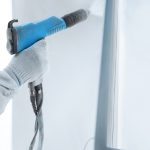 Comparisons: Which Type of Fluoropolymer Coating Should You Use?
Comparisons: Which Type of Fluoropolymer Coating Should You Use?
Fluoropolymers are synthetic plastics, rubbers, or resins with valuable attributes that provide suitable protective coatings for various industrial applications. Many metals including aluminum, brass, cast iron, copper, stainless steel, and steel alloys can be coated or treated with fluoropolymer resins, as well as many non-metallic media such as glass, fiberglass, plastics, and rubber. Continue reading Post ID 231
-
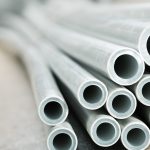 4 Unusual Applications for PFA Plastic
4 Unusual Applications for PFA Plastic
PFA plastic hosts several unique properties perfect for a variety of high purity applications. Its excellent chemical resistance against corrosive liquids and smooth low friction surfaces resist deterioration. With a wide temperature range, PFA ensures great stability in extremely hostile environments. Its weldability makes it perfect for fabrication purposes. Engineers and fabricators alike, take advantage of its partial optical clarity during routine inspection for signs of stress within the plastic walls. The polymer chain formation of PFA results in a low dielectric constant which makes PFA a worthy insulator. Undoubtedly, PFA is a powerful and robust plastic within the family of engineered fluoropolymers. Here are just a few unusual applications: Continue reading Post ID 231
-
Why a Custom Fabrication for Nitric Acid Storage Can Be a Better Solution
Nitric acid, or HNO3, is a colorless compound that tends to turn brownish-yellow when it decomposes into nitrogen oxides and water. It’s commonly used in the production of grass and plant fertilizers with ammonia to make ammonium nitrate, which is perfect for nitrogen-hungry vegetation. HNO3 works as a compound within rocket propellant, as well as a regular combustible fuel in diesel engines. It’s also used for oxidizing metal, artificially aging maple and pine in woodworking, the manufacture of some clothing dyes, the production of some plastics, and for making explosives such as nitroglycerin and TNT. Continue reading Post ID 231
-
The Tools You Need for the Safe Preparation of HCL Gas and Other Harsh Chemicals
Hydrogen Chloride (or HCL gas), is a toxic gas which is important in the semiconductor industry. HCL has many other uses; for instance, it’s used to produce certain chemicals, metals, petroleum, textiles, and even some food products such as gelatin, soy sauce, and vegetable protein. At room temperature, it’s a colorless gas with a rather pungent smell. When dissolved in water, it is one of the strongest known and toxic acids. And, when it reacts to common metals it yields hydrogen, which can be explosive when it comes in contact with air. Continue reading Post ID 231
-
 3 Things Every Engineer Should Know About the Physical Properties of Fluoropolymers
3 Things Every Engineer Should Know About the Physical Properties of Fluoropolymers
Polymer science has come a long way since Leo Baekeland invented the first official synthetic polymer in 1907 (aptly named “Bakelite”). Since then, polymer science and the development of synthetic polymers has expanded to include a wide range of man-made polymers and significant improvements to the manufacturing industries across a variety of fields. Continue reading Post ID 231
-
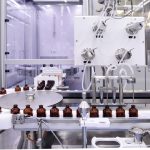 Common Pneumatic Valve Types for Engineers
Common Pneumatic Valve Types for Engineers
Chances are high that if you work in any type of laboratory or manufacturing environment with liquids or gases, you are probably familiar with a range of classic pneumatic valves. For a quick refresher: pneumatic valves help to control, manage and handle the amount of media, liquids and gases, which flow through a system. Continue reading Post ID 231
-
6 Acid Resistant Materials That Can Be Used Effectively in a Lab
Whether you work in the pharmaceutical industry or chemical manufacturing, finding acid resistant materials to create safe and compliant laboratories or manufacturing facilities is an important part of the job. Luckily, for those of us that work in cleanroom environments, that are plenty of acid resistant materials to choose from and the varying benefits of each can help you figure out which one is best for your specific use case.
1. PTFE (or Teflon™) – PTFE, also commonly known as Teflon™, is one of the most acid resistant materials available and is commonly used in chemical and pharmaceutical lab applications. Aside from being resistant to many acids used in labs, most people know PTFE (or Polytetrafluoroethylene) as one of the best materials for low friction properties. In fact, it has the second lowest co-efficient of any known solids aside from diamond-like carbon (DLC). What many people don’t know, however, is that PTFE as a lubricant can offer reduced friction in the form of less wear and tear and energy consumption on manufacturing equipment and machinery. And in more stringent healthcare applications, PTFE coatings can minimize the risk of bacteria sticking to hospital equipment, effectively reducing the likelihood of spreading infections.
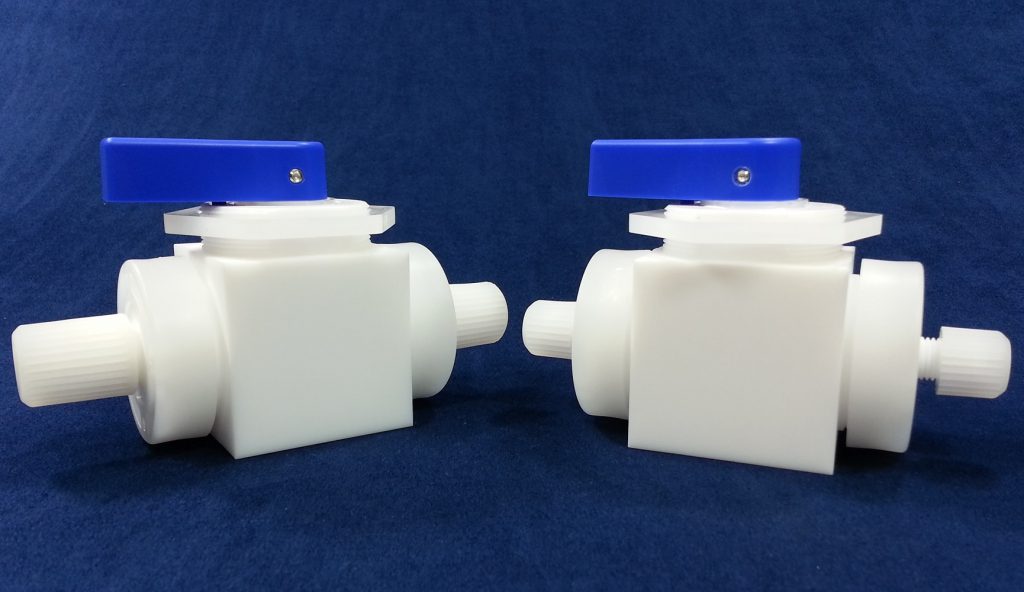
PTFE Ball Valve from iPolymer. 2. Hastelloy® – Hastelloy® is a metal superalloy that’s highly resistant to acids, but is primarily used in very niche applications within the aerospace, chemical processing, and industrial gas turbine industries. That’s because Hastelloy® offers the added benefit of working well with high pressure and temperature characteristics. Because Hastelloy® is great for high temperature and high stress environments, like inside of chemical reactors, it’s one of the most expensive acid resistant materials. Given its high cost, it’s not always the most optimal solution for most labs – unless you’re working in a highly corrosive environment.
3. PVDF – Polyvinylidene (or PVDF) is an acid resistant material (though not as resistant as PTFE) that’s used for a lot of different high purity applications. It’s more flexible than some of its acid resistant counterparts, such as PTFE, and can be injected, molded or welded. Because of its flexibility, it’s often used as an insulator for wires and as piping for high purity liquids. PVDF isn’t as resistant to temperature as other acid resistant materials, so that hinders its ability to work in a wide range of chemical and pharmaceutical lab cases.
4. Polypropylene – Polypropylene is a thermoplastic polymer that’s rugged and resistant to many acids. It can also function as both a plastic and a fiber, and because of that has one of the largest varieties of applications of all plastics. The fact that it’s relatively cheap to produce also doesn’t hurt. You’ll almost always find polypropylene in small plastic parts for consumer electronics and household appliances, but because of its acid resistant properties, it’s also a popular choice for lab equipment.
5. PEEK – Polyether ether ketone (PEEK) is a sturdy semicrystalline thermoplastic that can stand up to high temperatures. It can be machined almost like metal, so it’s used in applications that are more demanding, such as electrical cable insulation, piston parts, bearings, pumps, and compressor plate valves. These days, new developments in PEEK processing have given it the ability to have shape-memory behavior, which has a lot of applications in orthopedic surgery. PEEK is more cost prohibitive to work with, though, so it’s usually only used in very specific applications.
6. PFA – Perfluoroalkoxy alkane (or PFA) is an acid resistant material whose primary claim to fame is its ability to be injection molded. It’s highly corrosion resistant, so it’s most often used in working with aggressive chemicals. It has properties that are very similar to PTFE, but it’s ability to be melt-processed give it an advantage in applications that require injection molding. Because of this, though, it can be expensive to customize.
-
PTFE Diaphragm Valve Advantages in the Pharmaceutical Industry
Pharmaceutical research has come a long way over the last few decades. And with it, so have pharmaceutical laboratories and manufacturing facilities. With an increasingly competitive industry, any small improvement in lab processes and manufacturing setups can mean big gains for R&D and eventually, the bottom line. So it’s no surprise that modern pharma labs and pharma production facilities are veritable gold mines of high-tech lab equipment designed to improve efficiency and minimize errors.
Despite that, it seems that there are still some kinks in the quality control department to work out. A 2014 study by the US Government Accountability’s Office found that the most often cited reason for drug shortages and delays was an issue in quality control in the manufacturing process. In fact, an FDA Staff Report from 2012 showed that weaknesses in sterile injectable drug manufacturing had caused nearly a third of the total biopharmaceutical industry’s production capacity to be taken offline. When you’re dealing with hundreds of millions in potential drug revenue, that’s a huge loss – and one that most pharmaceutical companies can’t afford.
For some manufacturing industries, large machinery maintenance plays a major role in minimizing downtime and keeping the manufacturing process rolling. However, for pharmaceutical research and manufacturing, often you’re dealing with high purity compounds, where one small malfunctioning piece of equipment can mean losing or contaminating an entire production run.
With these types of pharmaceutical applications, a PTFE diaphragm valve offers a wide range of advantages over the alternatives. One of the biggest advantages being the high cycle life that allows PTFE diaphragm valves to stay functional and in good working conditions much longer than other types of materials. In fact, PTFE offers a few strong advantages when it comes to the diaphragm valve use in the pharmaceutical industry.
- Chemical compatibility – A PTFE diaphragm valve has a high chemical compatibility, meaning it can work with and safely stand up to a wide variety of chemicals and chemical compounds. In pharmaceutical applications, this means that PTFE diaphragm valves are incredibly versatile and and can be used for many different tests, experiments, and manufacturing processes.
- Low friction properties – PTFE has a low coefficient of friction, which makes it an ideal choice when you’re trying to avoid unnecessary wear and tear in a pharmaceutical manufacturing setup. This can result in a much lower part replacement costs and less downtime due to maintenance.
- Low surface adhesion – While other materials can create issues when it comes to surface adhesion, PTFE has a low surface adhesion which means that when pharma researchers are working with pills or powders, it doesn’t stick to the materials. And when working with liquids, it minimizes coagulation.
These advantages might seem small, but over time they can result in large improvements and some pretty strong bottom line business results, such as improvements in value life, an increase in production yield, and cost savings over time, as PTFE is a much more cost-effective material compared to most metals. And in the competitive world of pharmaceutical research and manufacturing, those small gains can add up to big wins for your company.
